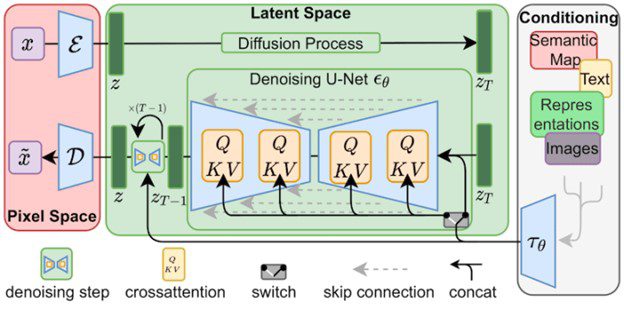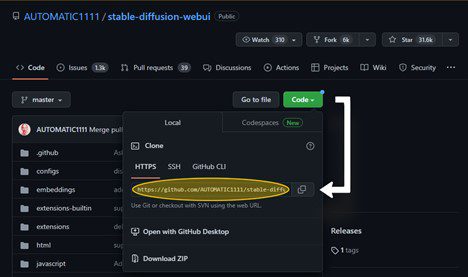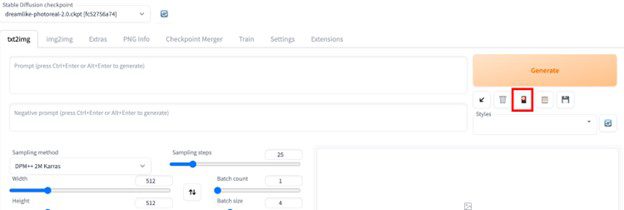The LoRA Stable Diffusion method is a game-changer for the AUTOMATIC1111 system, allowing data analysts and academics to find meaningful patterns and insights in large datasets easily. This state-of-the-art model rapidly processes and analyzes data using stable diffusion methods and low-rank approximation, leading to better forecasts and well-considered choices.
Whether you’re a data scientist, an AI machine learning enthusiast, or a business professional, mastering LoRA Stable Diffusion will greatly improve productivity and draw useful conclusions from seemingly incomprehensible numbers. In this article, we will introduce the LoRA model, show you how to set it up, and then discuss how to use LoRA stable diffusion. Let’s delve into LoRA Stable Diffusion and see what it can do for AUTOMATIC1111.
Also read: How to Fix Stable Diffusion Errors? >
Table of Contents: hide
What Is LoRA Model?
The LoRA (Low-Rank Approximation) model is a robust algorithm built for the AUTOMATIC1111 system’s use in tackling complicated data issues. The LoRA model aims to improve computing efficiency while gaining useful insights from complex information. Using low-rank approximation and Stable diffusion methods provides a fresh perspective on analyzing data.
The foundation of the LoRA model is stable diffusion, which facilitates the exchange of data and the identification of causal relationships between variables. In this way, important details may spread, allowing for a more thorough examination of the dataset as a whole. Furthermore, LoRA’s use of a low-rank approximation approach results in a more efficient and concise representation by reducing the dimensionality of the data while maintaining essential information.
The LoRA approach facilitates efficient analysis of large datasets, feature extraction, and improved predictive modeling for academics and data analysts. Users may benefit from the AUTOMATIC1111 platform’s LoRA capabilities by learning the basics of the model and putting that knowledge to work for them.
How does LoRA work?
The LoRA model processes and analyzes detailed information via iterative phases using sound diffusion and low-rank approximation approaches. Let’s see below how to use LoRA Stable Diffusion:
- Stable Diffusion: LoRA uses a process called stable diffusion, which lets information spread easily from one data point to another and always be compared with Midjourney and Dall-e. It records the interrelationships between the variables and ensures the data is connected properly. LoRA facilitates this dissemination, allowing the discovery of previously hidden correlations and patterns in the data.
- Low-Rank Approximation: The LoRA model uses a low-rank approximation to maximize computing performance and decrease dimensionality. This method reduces the space required to store data while keeping all relevant details intact. LoRA reduces the dimensionality of the dataset, making it easier to analyze while preserving as much information as possible.
- Iterative Optimization: During the optimization process, LoRA keeps refining its estimate. It constantly adjusts the diffusion process and the low-rank approximation for the best possible data representation. LoRA can refine the retrieved patterns and insights over time and increase performance via iterative optimization.
The LoRA model can analyze complicated datasets, extract significant characteristics, and deliver useful insights by integrating stable diffusion, low-rank approximation, and iterative optimization. Lora is a great tool for many AUTOMATIC1111 data analysis tasks because it can capture dependencies and enhance computing performance.

Understanding LoRA Model
How to use LoRA?
Now that we’ve covered the LoRA model’s foundations, we can dive into how to use LoRA stable diffusion in AUTOMATIC1111. Following these steps, you can use LoRA to analyze your complicated data and draw useful conclusions.
Step 1: Install the LoRA model
To begin using the LoRA model on AUTOMATIC1111, you must first install it from their system. First, access the AUTOMATIC1111 platform, then go to the “Extensions” tab to begin working with the LoRA model. You must find the “Install” button beside the LoRA Stable Diffusion model. Doing so will guarantee that the LoRA model is accessible whenever needed for your data analysis work.

Installing LoRA Model
Step 2: Use the LoRA model
After installing the LoRA Stable Diffusion model, start by opening AUTOMATIC1111 and going to “Extensions” to use the LoRA model. To use LoRA, the test.py script must be executed with the proper parameters. If you wish to utilize LoRA for picture editing, for instance, you may type:

Write This Prompt
This will generate 100 altered photos from the input images in the datasets/image_editing folder and save them in the results/image_editing folder. Additional options like –net, –net, –lambda_L1, –lambda_GAN, and –lr may be used to fine-tune the model’s settings.

Generate Images
What should We notice about Using LoRA?
There are a few things to consider while adding the LoRA model to the AUTOMATIC1111 framework. If you give these details the attention they deserve, you may increase the reliability and usefulness of your data analysis. Consider these essentials:
- Data Preprocessing: Your data must be properly prepared before you use the LoRA model. Preparing data for accurate and full results for the LoRA analysis is important. Remove duplicates, fill in missing data, and deal with unusual observations.
- Parameter Tuning: The LoRA model may need some parameters adjusted for the best results. Fine-tune the LoRA analysis by adjusting parameters like diffusion rates, rank approximation thresholds, and convergence criteria. Try out a few different combinations of options until you discover a setup that works well with your data and analytic goals.
- Computational Resources: LoRA research can be hard on computers, especially regarding big datasets. Keep in mind how much processing power the model needs to function properly. Verify that your computer has enough RAM, CPU, and disk space to analyze without hiccups.
- Validation and Interpretation: The LoRA model can give useful information, but you must understand and confirm the results in your unique situation. Be aware of the caveats of the LoRA study, and double-check the results using other methods of analysis or your domain expertise. This ensures that the insights from the LoRA model are trustworthy and accurate.
The quality of your data analysis and the insights you get from complicated datasets will improve if you keep these things in mind while using the LoRA approach. More precise and trustworthy outputs may be achieved with the LoRA model in AUTOMATIC1111 by careful data preparation, parameter adjustment, task management, and result interpretation.
Typical LoRA models
The LoRA Stable Diffusion framework is adaptable, making it suitable for various data analysis needs. Here, we go into three representatives LoRA models to highlight the variety of uses for this technology:
The Colorwater LoRA
This model takes the final pictures produced by any Stable Diffusion model and gives them a watercolor look. It creates a more artistic, gentle appearance in the photographs by blending colors and reducing sharp edges. It has several potential applications, including but not limited to picture manipulation, style transfer, image synthesis, and more. The Colorwater LoRA file is tiny enough to be downloaded and integrated into any checkpoint model with little effort. It’s one of the most sought-after LoRA models on Civitai.com and may be used in various settings.
Anime Lineart LoRA
It is a model that can take the output of any Stable Diffusion model and produce visuals in the lineart or color book style. It may be used for coloring or drawing because it retains the original pictures’ features and forms. It may also be used for drawing practice or illustrating manga or comics. A little file called Anime Lineart LoRA can be downloaded and integrated into any checkpoint model. The prompt must include the word “lineart” to function correctly. You won’t find a more original or entertaining LoRA model anywhere else on Civitai.com.
Urban Samurai LoRA
It is a model that adds techwear and katanas to the figures produced by any Stable Diffusion model. It’s a great way to get a hip, cutting-edge style because of the cyberpunk touches. It’s great for making fan art, concept art, or character ideas. The Urban Samurai LoRA is a lightweight file that can be downloaded and included in existing checkpoint designs. To get the most out of it, you should draw your characters using the guidelines established by the Anime Tarot Card Art Style. It’s one of the most original and fashionable LoRA designs on Civitai.com.
Final Thought
Finally, the LoRA Stable Diffusion model integrated with the AUTOMATIC1111 platform provides a powerful method for gaining valuable insights and patterns from large datasets. Users may improve their data analysis skills and get useful insights by following the installation instructions and using the LoRA model well. LoRA’s effectiveness in various settings is shown by its use in machine learning, NLP, and clustering. Users can get the most out of LoRA and make smart, data-driven choices with little care regarding data pretreatment, parameter adjustment, and result interpretation. Discover the potential of LoRA for your data analysis projects in AUTOMATIC1111.



